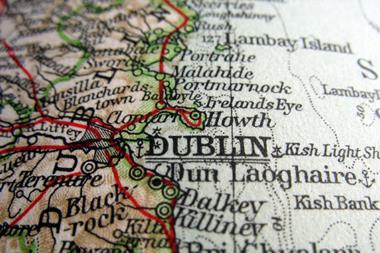The Ireland Strategic Investment Fund’s discretionary portfolio saw its annual return fall to 1.5% in 2015 from the 4.8% reported the year before, as its equities allocation was reined in.
According to the quarterly report for the three months to the end of December 2015, assets in Ireland’s sovereign development fund fell to €21.4bn from €22.2bn at the end of 2014.
The government set up the Ireland Strategic Investment Fund (ISIF) in late 2014 to support economic activity and employment in the country.
The comparison figures for 2014 are a combination of the ISIF and its predecessor the National Pensions Reserve Fund (NPRF).
As part of its revised mandate, it was today announced as the cornerstone investor in a €30m SME fund backed by the UK’s BMS Finance, which will extend loans of up to €5m to companies – without the need for personal guarantees.
Eugene O’Callaghan, the ISIF’s director, said: “Our market research has shown that early-stage Irish SMEs and those with limited available collateral often struggle to raise terms loans in the €1m-3m range.”
The ISIF consists of a discretionary portfolio and a directed portfolio, with the latter controlled by the Irish government and comprising shares in Allied Irish Banks (AIB) and Bank of Ireland (BoI) acquired as part of the country’s bank bailout.
Assets in the discretionary portfolio, now investing in opportunities meant to stimulate domestic economic growth, rose to €7.9bn at the end of 2015 from €7.2bn a year earlier, while assets in the directed portfolio shrank to €13.5bn from €15bn.
The return on the directed portfolio was 13.7%, compared with 12.5% the year before.
The equities allocation in the discretionary portfolio fell markedly during 2015, to stand at 13% of the portfolio’s assets at the end of last December, down from 24.8% 12 months before.
Cash and cash equivalents in the portfolio, on the other hand, rose to 45.5% from 33.6%.
The ISIF’s commitments as part of its mandate to support the Irish economy grew to €2.2bn from €1.4bn at the end of 2014.
Alongside its own investment in the various projects, the fund also published the level of third-party investment in those projects in Ireland, as well as the total size of each project.
These figures showed that the fund’s “multiple of total project size in Ireland to total ISIF commitment” had dipped slightly to 2.5x from 2.6x, suggesting that, in 2015, it had been less rather than more successful in attracting investment alongside its own for the projects.
The ISIF also said the Finance Ministry had given it €335m last November to develop a “connectivity” fund, that would become one of its sub-portfolios.
The fund would aim at “enhancing connectivity both within and for the State”, it said.
According to its working definition, it said connectivity assets were those that “enhance, develop or sustain the physical and virtual connectivity of Ireland as an island nation”.








No comments yet